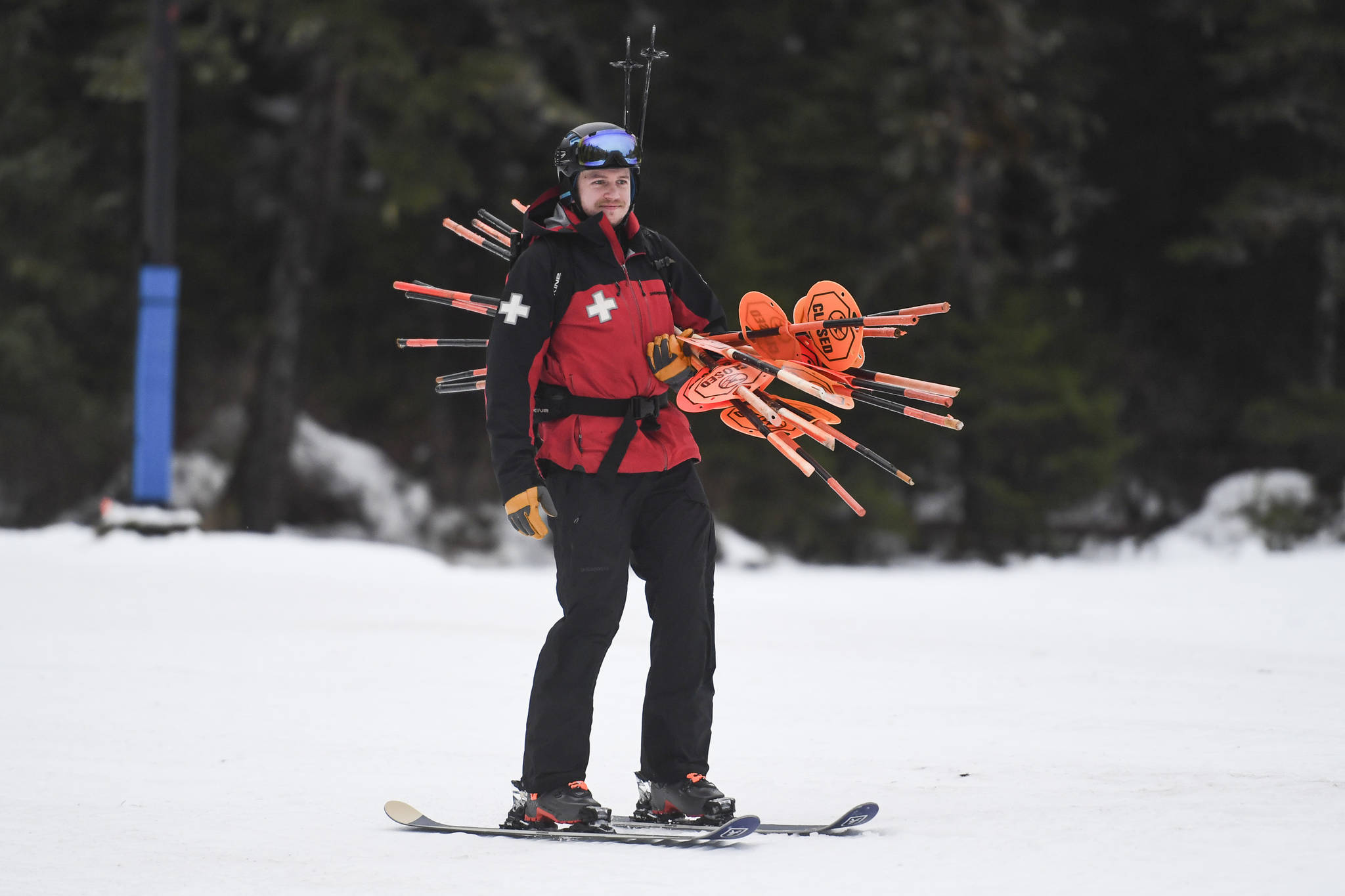On a cloudy Thursday morning just after 9 a.m., Eaglecrest General Manager Dave Scanlan and Director of Snow Safety Brian Davies stand midway up the Muskeg Trail, one of four “bunny slopes” outside the Eaglecrest Lodge.
A kindergarten class is coming to the mountain in 24 hours, and the men are assessing the impact several days in a row of above-freezing temperatures have had on the slope. Davies makes the call that with some borrowed snow, the Muskeg Trail will be good to go by the next day.
“We’re going to go move snow around gingerly to make it a palatable path,” Davies said after coming back down the slope.
Unseasonably-warm winters as of late have meant the Eaglecrest Ski Patrol having to strike a tougher balance between providing skiing opportunities and keeping people on the mountain safe.
In the past five seasons, the average snowfall at Eaglecrest’s base (120 inches) is nearly half the 2009-2014 average (219 inches), according to ski patrol records. But despite less snow, ski patrol has managed to keep Hooter Chairlift open for an average of 77 days in the past five seasons, on par with earlier years.
“It’s demanding; the pay is not spectacular,” Scanlan said. “Thankfully, they’re all passionate about the work that they do and I just count my blessings that everybody has that passion for the work and being here and helping to create a good safe environment.”
Ski patrol is opening terrain earlier than it would in the past given the same snow conditions, Davies said. That was the case last weekend as ski patrol opened Hooter Chairlift with signs stating it was only for advanced skiers.
“There’s no black (advanced) runs on Hooter, but this last weekend, we have a sign at the bottom, we talk about it on our ski report, that (say) it’s open up for advanced skiers,” Davies said. “… It’s balancing people’s abilities matched with their expectations, and also providing a reasonable product.”
There are other variables besides just snowfall that affect how much of the mountain can open. Equally important to the amount of snowfall is the pattern of snowfall, according to Davies.
“It’s how the weather lays the snow down because we can have 24 inches of snow and have horrific winds and the snow’s in the wrong spot or we can have 12 inches of snow with the right winds and it’s amazing what 12 inches of snow can cover. You can’t just say we historically open with 18 inches of snow. It’s more how the snow gets laid out and distributed.”
For about the last six years, Davies has led up the Eaglecrest trail crew, which “mow” the ski runs during the summer. This includes taking away brush and filling in low areas with dirt.
Dale Gosnell, 59, is one of six Eaglecrest full-time ski patrollers at Eaglecrest. He said when he started back in the late-’90s, the winter conditions were also wet and warm, but there was no trail work being done in the offseason.
“Back in the day, you’d either have to make a lot of snow or wait for it to snow naturally to fill the gullies,” Gosnell said.
The winters became much more snowy in the 2000s, he said, which made the work of being a ski patroller more enjoyable. When there’s lots of snow to go around, ski patrollers are all over the mountain adjust ropes, fences and chairlift tower pads.
“More of the ski mountain is open and we’ve got bigger responsibilities because more terrain is open,” he said.
But even without this work, ski patrol is still a dream job to Gosnell.
“I like being outside, and even with lower snow conditions and less snow and less terrain open, I’m still outside, and that’s important to me,” Gosnell said.
• Contact sports reporter Nolin Ainsworth at 523-2272 or nainsworth@juneauempire.com.

